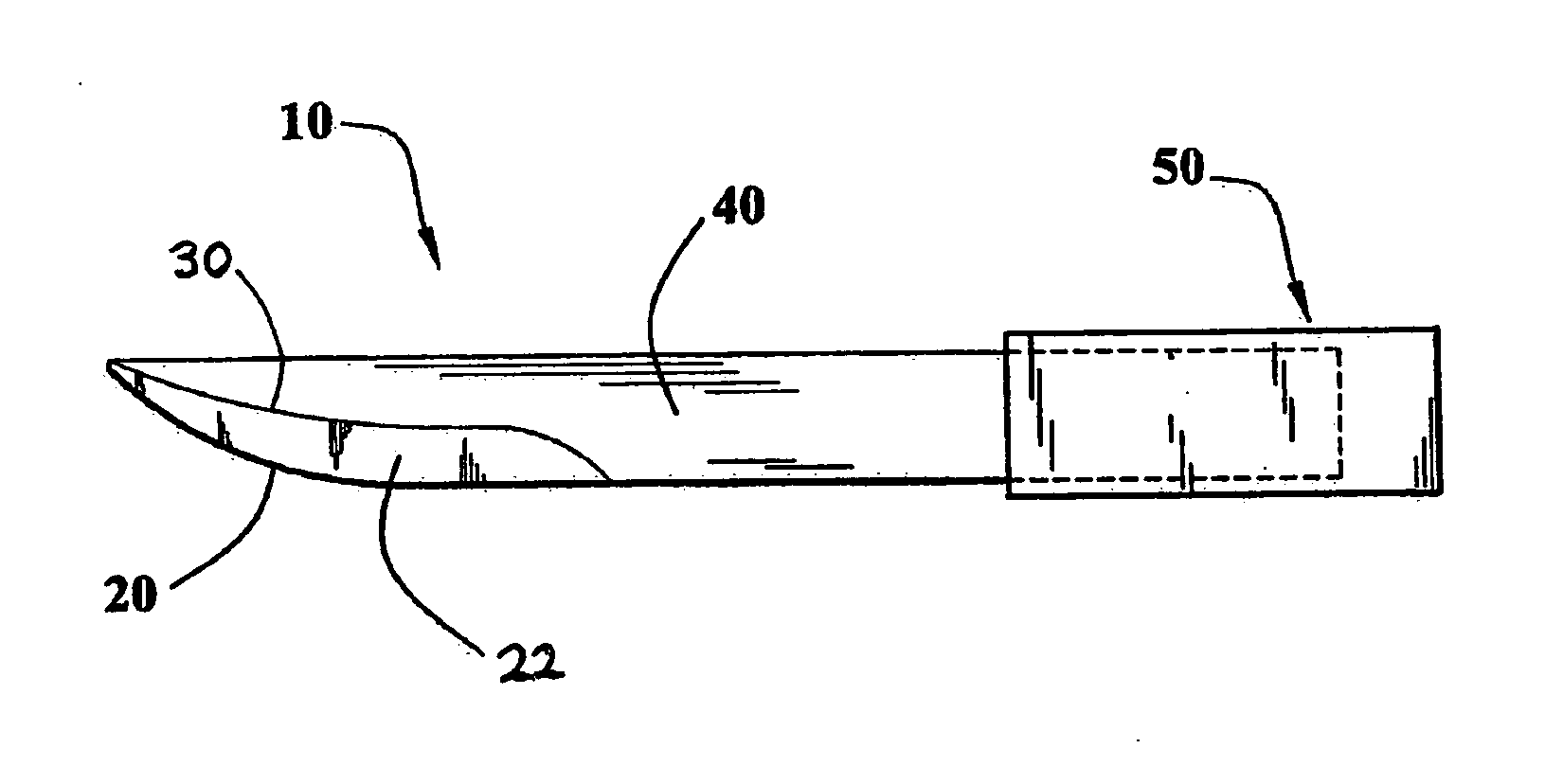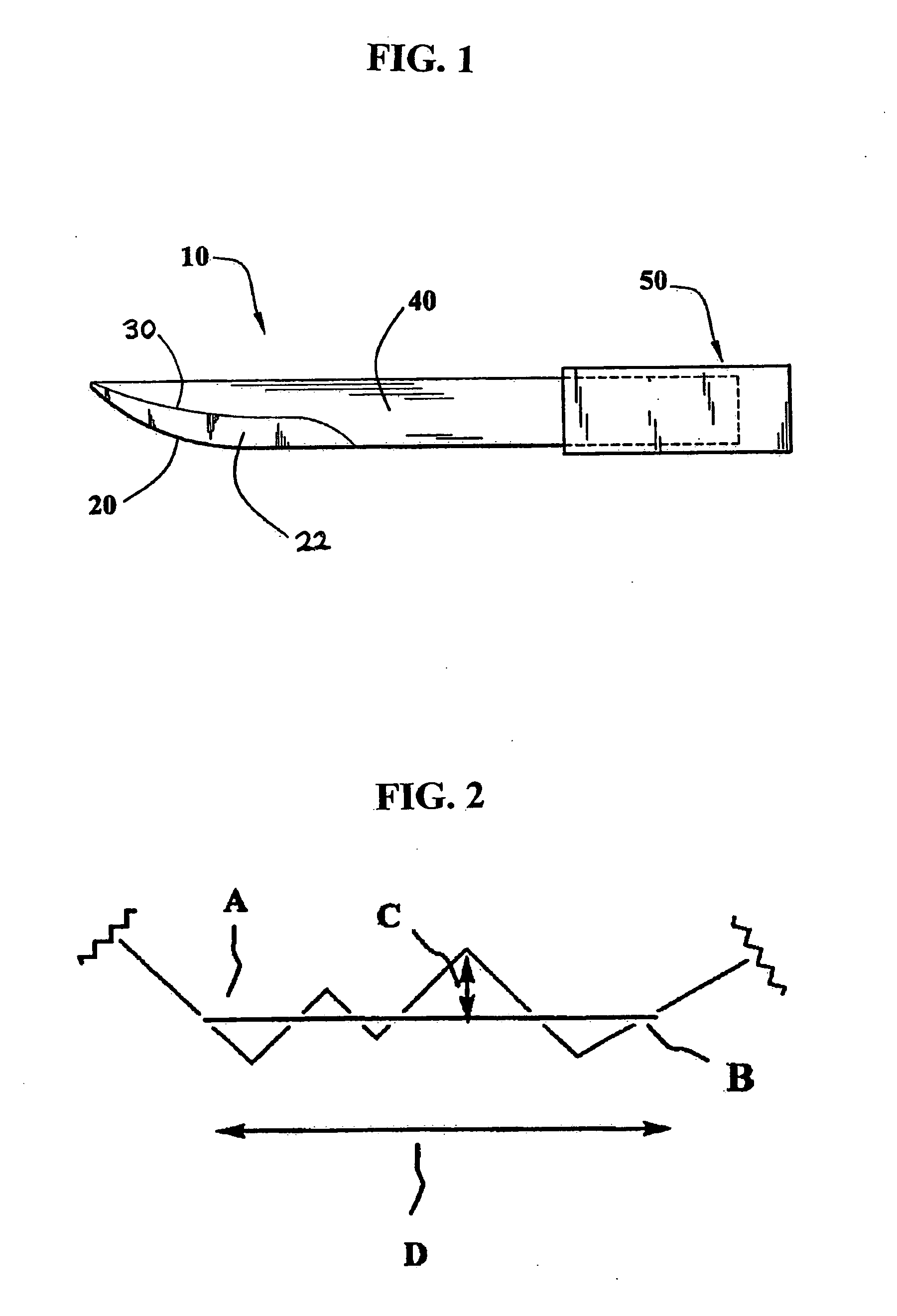Methods for ameliorating tissue trauma from surgical incisions
a tissue trauma and incision technology, applied in the field of tissue trauma from surgical incisions, can solve the problems of tissue abrasion, tissue trauma or damage, cell rupture, etc., and achieve the effects of reducing post-operative pain, reducing post-operative swelling, and improving wound healing
- Summary
- Abstract
- Description
- Claims
- Application Information
AI Technical Summary
Benefits of technology
Problems solved by technology
Method used
Image
Examples
example 1
[0066]Surgical blades suitable for use in the methods of the present invention were prepared by polishing commercially available BARD-PARKER® No. 15 stainless-steel surgical scalpels (Becton Dickenson AcuteCare, Franklin Lakes, N.J.) according to the procedures described below. Sets of scalpels were polished by buffing with chromium oxide buffing compound in a single pass, as well as in multiples passes. In addition, blades were polished by first buffing with chromium oxide, followed by chemical-mechanical polishing. The surface roughness of the blades was evaluated using “cylinder and tilt” metrology to determine the average surface roughness (Ra), the RMS surface roughness (Rq), and peak to valley roughness (Rz), which is determined using the 5 highest and 5 lowest points on the surface, as well as by high band-pass metrology, all of which are well known in the art. Comparison was made to commercial blades, as received, including diamond blades (CVD Diamond Knife for Soft Tissue, ...
example 2
[0071]The methods of the present invention were evaluated in a guinea pig model using female Hartley guinea pigs (about 400 grams in weight), housed and cared for according to NIH guidelines, to assess the improvement in wound healing achieved by performing surgical incisions with surgical blades having a uniform ultimate cutting edge and smooth surface (i.e., RMS surface roughness of not more than about 200 nm, and a uniform edge having a deviation along any 680 μm segment of the ultimate edge of no more than about 4 μm), according to the methods of the present invention.
[0072]The test animals were anesthetized and prepped under standard surgical conditions and two 6 cm long incisions were made on the back of each animal through the skin and the underlying muscles (panniculosis carinea). One incision was made with a standard, commercial BARD-PARKER® No. 15 blade (as-received), while the other incision was made with a highly polished BARD-PARKER® No. 15 blade of the invention having...
PUM
 Login to View More
Login to View More Abstract
Description
Claims
Application Information
 Login to View More
Login to View More - R&D
- Intellectual Property
- Life Sciences
- Materials
- Tech Scout
- Unparalleled Data Quality
- Higher Quality Content
- 60% Fewer Hallucinations
Browse by: Latest US Patents, China's latest patents, Technical Efficacy Thesaurus, Application Domain, Technology Topic, Popular Technical Reports.
© 2025 PatSnap. All rights reserved.Legal|Privacy policy|Modern Slavery Act Transparency Statement|Sitemap|About US| Contact US: help@patsnap.com



